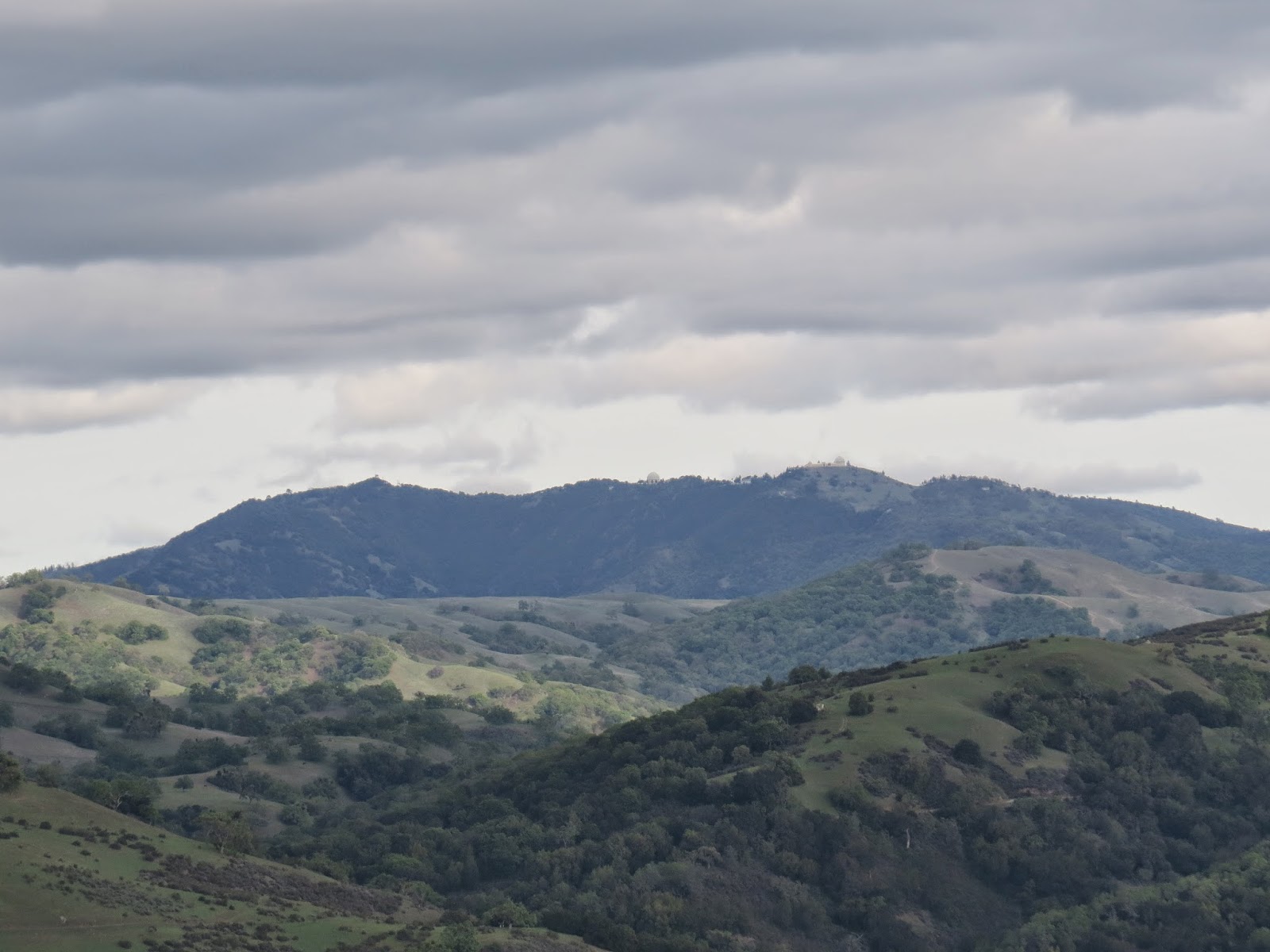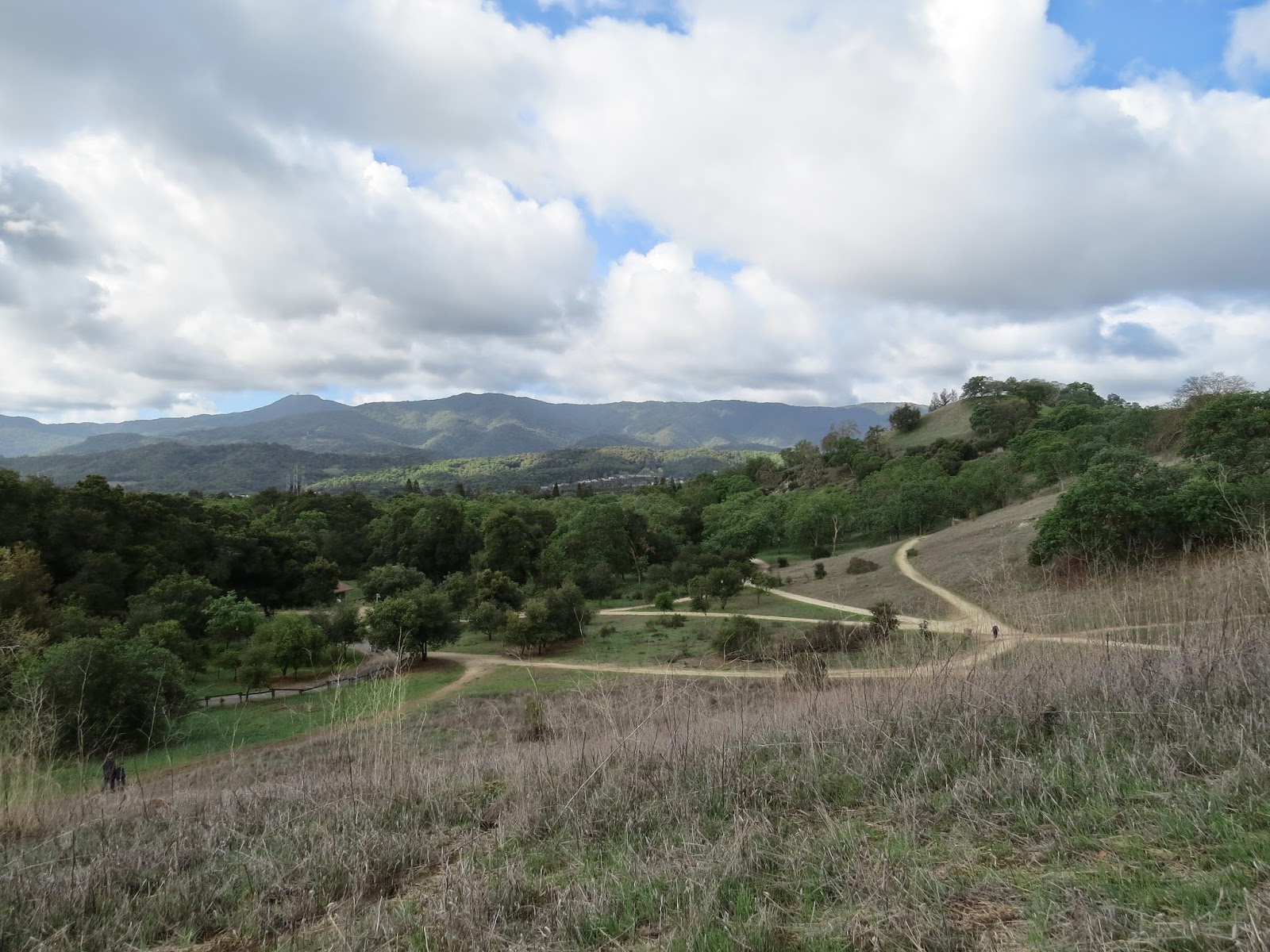I had first heard about the Fledglings through a San Francisco Bay Bird Observatory newsletter about the 2013 Fall Challenge, which included birdathon groups you could join. The Fledglings team caught my eye immediately, because, unlike any of the others, it was made of young birders. I asked to join the team, and went on my first birdathon with the young birders on October 5th. We saw a total of 71 species (still my big day record), and had a great time together. Later, I also joined the Fledglings for an "eBirding party" and for a nature sketching class with the awesome John Muir Laws.
On April 20th, I went on another birdathon with the Fledglings team. This time, instead of traveling to several different spots, we would be doing a survey of Ed Levin County Park, one of the best birding spots in the county. Again, this trip report won't contain photos, because I generally don't use my camera on birdathons.
I got there at the meeting time of 7:00, and received a welcome from the our team leader, Pati Rouzer, and the other young birders. We checked off some of the species we saw as we were waiting 30 minutes for the park to open, like Tree Swallow, Wild Turkey, Acorn Woodpecker. As soon as we were let in, we drove to the parking lot near the dog park area. Birds there included several Brown-headed Cowbirds, and both Hooded and Bullock's Orioles.
Walking up the first stretch of the Agua Caliente Trail yielded Red-winged Blackbirds in the blooming mustard to the right of the trail, and Yellow-billed Magpies on the slope of a hill. Now, we began looking carefully for two species we wanted to document: Grasshopper and Rufous-crowned Sparrows, to see how many there were of each. At the place that the trail turns right for the first time, there was a pair of Western Kingbirds, my #149 for the county this year. What would the next one be?
It turned out that we weren't disappointed by the number of Grasshopper Sparrows. By our count, there were about seven buzzing their insect-like calls in the grass. Most, however, were pretty far away and backlit. We couldn't find a Rufous-crowned Sparrow, though, even when Vivek Tiwari, one of the Fledgling parents, played it song and call from his phone. We soon came to Sycamore Gulch, a place known for its nesting birds. Ozzie, one of the young birders, spotted a Lazuli Bunting on top of one of the sycamores, and we all got good looks at it. I realized I was 3/4 of the way to achieving my goal of this year! The Lazuli Bunting is a great bird to have for this milestone. Only 50 left, but these are going to be the hardest birds to get!
At Sycamore Gulch, I found an Anna's Hummingbird on her nest, and Ozzie found another one, about five feet from the trail! A House Finch nest was found, too, and Lesser Goldfinches were everywhere.
We moved on farther down the trail, and found more Grasshopper Sparrows, but still no evasive Rufous-crowns. We struck gold on the way back, though, when Ozzie found one singing loudly, perching on a fence 20 feet from the trail! Another sparrow flew into Sycamore Gulch.
Almost at the parking lot, we noticed a Golden Eagle flying over the park. Apparently, before I had got there, a Golden Eagle was seen hunting Wild Turkeys. Too bad I didn't get to see it!
We carpooled to the Spring Valley Unit, and started to bird the areas around the lake. Ozzie's dad, Steve, noticed a Green Heron on the lake, which was one of my most overdue yearbirds. Good to finally see that one! Tree Swallows were in the air, due to our proximity to nest boxes put up especially for them. There were no sapuckers anywhere: it was too late for them, as we could see.
We noticed several White-crowned Sparrows at the last Spring Valley parking lot, and we also had some Golden-crowns on the Agua Caliente Trail - they'll probably be gone soon. Also in the eucalyptus at the last parking lot, there was a selasphorus hummingbird. Eventually, it sat on one of the oaks nearby and showed an almost completely green back, making it an Allen's Hummingbird! Well, most likely... The hummingbird never spread its tail to show un-notched R2 feathers, or narrow outer tail feathers (R5), but the almost entirely green back confirmed Allen's.
We then moved on to another parking lot with several flowering eucalyptuses, dubbed "Oriole-ville" for its plethora of Bullock's Orioles chattering in the foliage above. At one point, there were at least four orioles fighting each other at the same time! Nearby, there was a pair of Western Kingbirds posing so nicely that I couldn't resist taking out my camera and taking a photo, breaking my unofficial rule of not using cameras on birdathons. Of course, it just had to turn away. :)
Other birds we spotted at the Spring Valley Unit included more Acorn Woodpeckers, a White-breasted Nuthatch, two Cedar Waxwings, a Eurasian Collared Dove, and two Red-shouldered Hawks in the surrounding forest. We ended the day with 54 species. Overall, I had an awesome day, netting four FOYs, and seeing some great birds, like Grasshopper Sparrows, and watching nesting hummingbirds.
We then had lunch, and talked about... you guessed it... birding! As we were getting ready to leave, we met three birders on bicycles: Robert Furrow, his friend (whose name I don't remember), and Logan Kahle, a junior from San Francisco who is doing a California big year, where he will try to see 460 species. He is currently at 327. Good luck!
Summary:
Birds seen: 54
New birds: 4
Big year count: 152
Good birding,
Sergey
On April 20th, I went on another birdathon with the Fledglings team. This time, instead of traveling to several different spots, we would be doing a survey of Ed Levin County Park, one of the best birding spots in the county. Again, this trip report won't contain photos, because I generally don't use my camera on birdathons.
I got there at the meeting time of 7:00, and received a welcome from the our team leader, Pati Rouzer, and the other young birders. We checked off some of the species we saw as we were waiting 30 minutes for the park to open, like Tree Swallow, Wild Turkey, Acorn Woodpecker. As soon as we were let in, we drove to the parking lot near the dog park area. Birds there included several Brown-headed Cowbirds, and both Hooded and Bullock's Orioles.
Walking up the first stretch of the Agua Caliente Trail yielded Red-winged Blackbirds in the blooming mustard to the right of the trail, and Yellow-billed Magpies on the slope of a hill. Now, we began looking carefully for two species we wanted to document: Grasshopper and Rufous-crowned Sparrows, to see how many there were of each. At the place that the trail turns right for the first time, there was a pair of Western Kingbirds, my #149 for the county this year. What would the next one be?
It turned out that we weren't disappointed by the number of Grasshopper Sparrows. By our count, there were about seven buzzing their insect-like calls in the grass. Most, however, were pretty far away and backlit. We couldn't find a Rufous-crowned Sparrow, though, even when Vivek Tiwari, one of the Fledgling parents, played it song and call from his phone. We soon came to Sycamore Gulch, a place known for its nesting birds. Ozzie, one of the young birders, spotted a Lazuli Bunting on top of one of the sycamores, and we all got good looks at it. I realized I was 3/4 of the way to achieving my goal of this year! The Lazuli Bunting is a great bird to have for this milestone. Only 50 left, but these are going to be the hardest birds to get!
At Sycamore Gulch, I found an Anna's Hummingbird on her nest, and Ozzie found another one, about five feet from the trail! A House Finch nest was found, too, and Lesser Goldfinches were everywhere.
We moved on farther down the trail, and found more Grasshopper Sparrows, but still no evasive Rufous-crowns. We struck gold on the way back, though, when Ozzie found one singing loudly, perching on a fence 20 feet from the trail! Another sparrow flew into Sycamore Gulch.
Almost at the parking lot, we noticed a Golden Eagle flying over the park. Apparently, before I had got there, a Golden Eagle was seen hunting Wild Turkeys. Too bad I didn't get to see it!
We carpooled to the Spring Valley Unit, and started to bird the areas around the lake. Ozzie's dad, Steve, noticed a Green Heron on the lake, which was one of my most overdue yearbirds. Good to finally see that one! Tree Swallows were in the air, due to our proximity to nest boxes put up especially for them. There were no sapuckers anywhere: it was too late for them, as we could see.
We noticed several White-crowned Sparrows at the last Spring Valley parking lot, and we also had some Golden-crowns on the Agua Caliente Trail - they'll probably be gone soon. Also in the eucalyptus at the last parking lot, there was a selasphorus hummingbird. Eventually, it sat on one of the oaks nearby and showed an almost completely green back, making it an Allen's Hummingbird! Well, most likely... The hummingbird never spread its tail to show un-notched R2 feathers, or narrow outer tail feathers (R5), but the almost entirely green back confirmed Allen's.
We then moved on to another parking lot with several flowering eucalyptuses, dubbed "Oriole-ville" for its plethora of Bullock's Orioles chattering in the foliage above. At one point, there were at least four orioles fighting each other at the same time! Nearby, there was a pair of Western Kingbirds posing so nicely that I couldn't resist taking out my camera and taking a photo, breaking my unofficial rule of not using cameras on birdathons. Of course, it just had to turn away. :)
Other birds we spotted at the Spring Valley Unit included more Acorn Woodpeckers, a White-breasted Nuthatch, two Cedar Waxwings, a Eurasian Collared Dove, and two Red-shouldered Hawks in the surrounding forest. We ended the day with 54 species. Overall, I had an awesome day, netting four FOYs, and seeing some great birds, like Grasshopper Sparrows, and watching nesting hummingbirds.
We then had lunch, and talked about... you guessed it... birding! As we were getting ready to leave, we met three birders on bicycles: Robert Furrow, his friend (whose name I don't remember), and Logan Kahle, a junior from San Francisco who is doing a California big year, where he will try to see 460 species. He is currently at 327. Good luck!
Summary:
Birds seen: 54
New birds: 4
Big year count: 152
Good birding,
Sergey


































